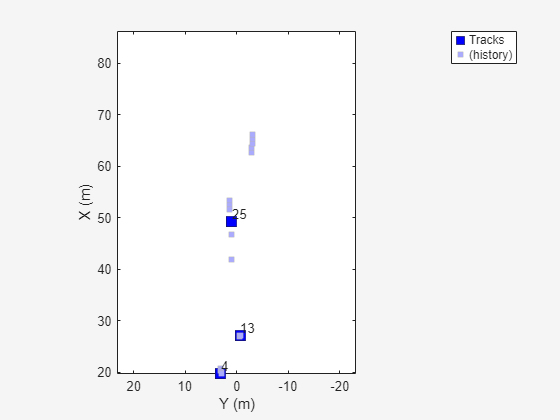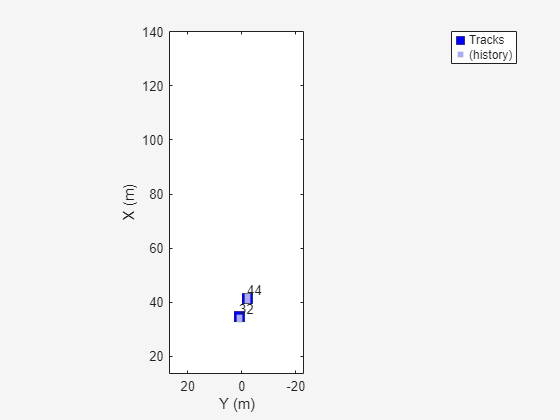ActorTrackData
Description
The ActorTrackData object stores recorded actor track data and
associates it with the timestamps at which it was recorded.
Creation
Syntax
Description
trackData = scenariobuilder.ActorTrackDataActorTrackData
object, trackdata.
trackData = scenariobuilder.ActorTrackData(timestamps,trackID,position)ActorTrackData
object with the Timestamps, TrackID, and
Position properties set by the timestamp,
trackID, and position arguments, respectively.
Additionally, this syntax sets the SampleRate,
SampleTime, Duration,
NumSamples, and UniqueTrackIDs
properties.
trackData = scenariobuilder.ActorTrackData(timestamps,trackID,position,Name=Value)Name="actorTrackData1" specifies the name of the recorded actor track
data as "actorTrackData1".
Note
This feature requires the Scenario Builder for Automated Driving Toolbox™ support package. You can install the Scenario Builder for Automated Driving Toolbox support package from the Add-On Explorer. For more information about installing add-ons, see Get and Manage Add-Ons.
Input Arguments
Name-Value Arguments
Output Arguments
Properties
Object Functions
add | Add data to actor track data object |
remove | Remove data from actor track data object |
read | Read data from actor track data object |
plot | Plot actor track data frame |
play | Play track data from actor track data object |
copy | Create copy of sensor data object |
crop | Crop data from sensor data object |
synchronize | Synchronize sensor data with reference sensor information |
normalizeTimestamps | Normalize timestamps of sensor data object |
filter | Filter track data from actor track data object |
mergeTrackIDs | Merge two actor tracks using track IDs |
mapTrackIDsToNumbers | Map actor track IDs to numbers |
importFromObjectTrack | Import track list from objectTrack object |
convertTimestamps | Convert timestamp format of sensor data object |
Examples
Version History
Introduced in R2025aSee Also
GPSData | Trajectory | CameraData | LidarData | recordedSensorData

